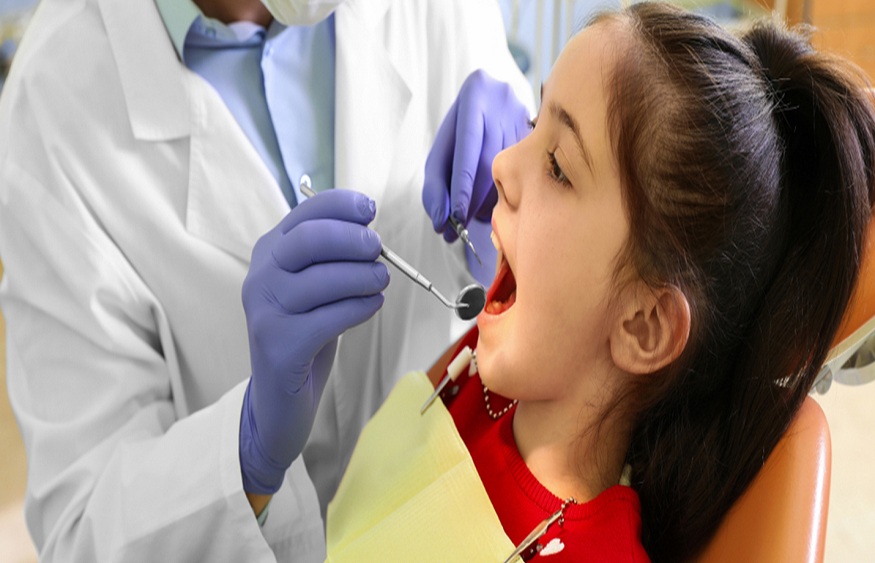The Rise of Tele-Dentistry: Virtual Consultations and Remote Dental Care

With the use of technology, the sector of healthcare has seen considerable development. Tele-dentistry, a subfield of telemedicine with an emphasis on distant dental treatment, is one prominent breakthrough. Now that remote dental care and video consultations are commonplace, people may get professional dental advice and treatment without ever leaving the comfort of their own homes.
The interesting field of tele-dentistry is explored in this blog, along with its advantages, disadvantages, and potential impact on dental treatment in the future. So, read this blog before searching for “dental pain treatment near me” or any other dental treatments.
Understanding Tele-Dentistry
The term “tele-dentistry” describes the use of technology to provide remote dental treatment and consulting services. This can include monitoring oral health concerns remotely, conducting in-person video consultations with patients, and even dispensing medication based on the analysis of dental photos. Patients can communicate with qualified dental specialists for direction, diagnosis, and treatment suggestions such as dental pain treatment using a variety of secure networks and communication platforms.
Benefits of Tele-Dentistry
- Convenience: Patients don’t have to spend time and energy traveling to a dental office thanks to virtual consultations, which is convenient. This convenience is especially beneficial for routine check-ups, follow-up appointments, minor dental concerns or whether you are searching for “teeth whitening dentist near me.”
- Improved Accessibility: Tele-dentistry eliminates the distance between patients and dentists, especially in remote or underdeveloped locations where access to dental treatment may be constrained. It is now possible to provide prompt support to those who have problems with transportation, physical limitations, or time restraints.
- Continuity of treatment: Tele-dentistry enables continuity of treatment for people who regularly move or are on the go. Regardless of where they live, patients may continue to work with a reliable dentist.
- Cost Reduction: Teledentistry allows for cost reductions for both patients and dental professionals. Dental professionals may cut back on overhead costs involved with keeping an actual office location while patients avoid travel and parking expenditures.
- Early Intervention: Early diagnosis and treatments are made possible via teledentistry. By consulting dentists as soon as they experience any discomfort or worry, patients can stop small concerns from becoming more significant ones.
Challenges and Consideration
Regulations and Licensing
Tele-dentistry functions under the confines of national, regional, and municipal laws. Before offering remote care, dentists must make sure they are authorized to do so in the patient’s country.
Technological Barriers
Not all patients have access to the internet connections or technology needed for virtual consultations. The broad use of tele-dentistry may be hampered by this digital gap, particularly in underserved populations.
Limitations of Diagnosis
While tele-dentistry is great for advice and consultations, it is difficult to diagnose complicated oral problems without a physical examination. For a precise diagnosis in some circumstances, an in-person assessment may be necessary.
Data Privacy and Security
Data security and privacy are issues when sending private health information and photographs online. To maintain the confidentiality of patient information, dental professionals are required to abide by rigorous rules.
The Future of Dental Care
The quick development of tele-dentistry demonstrates how it has the potential to alter the delivery of dental care. We can expect the following advancements as technology continues to advance:
Advanced Imaging
Dentists, whether they are a teeth whitening dentist or the best veneer dentist, will be able to correctly identify dental issues remotely thanks to high-resolution imaging equipment, which will improve the accuracy of diagnoses.
Collaborative Care
Collaboration is encouraged amongst dental professionals due to tele-dentistry, which also enables them to consult with experts and exchange knowledge on challenging cases.
Home Care Guidance
Dentists can offer patients individualized advice on nutrition, behaviors, and oral hygiene routines to help them maintain excellent oral health in between consultations. So no more searching for “best veneer dentist near me” and obtaining a one-size-fit-all treatment.
Integration of Artificial Intelligence (AI)
AI systems can help dentists by evaluating dental photos, spotting trends, and recommending possible treatments.
Conclusion:
Dental treatment is being revolutionized by tele-dentistry since it is now more convenient, affordable, and accessible. The advantages of remote consultations and treatments are apparent, even though some difficulties still exist. Tele-dentistry is positioned to play an increasingly bigger role in influencing the future of oral healthcare, enhancing patient outcomes, and extending the reach of dental practitioners throughout the world as technology advances.







